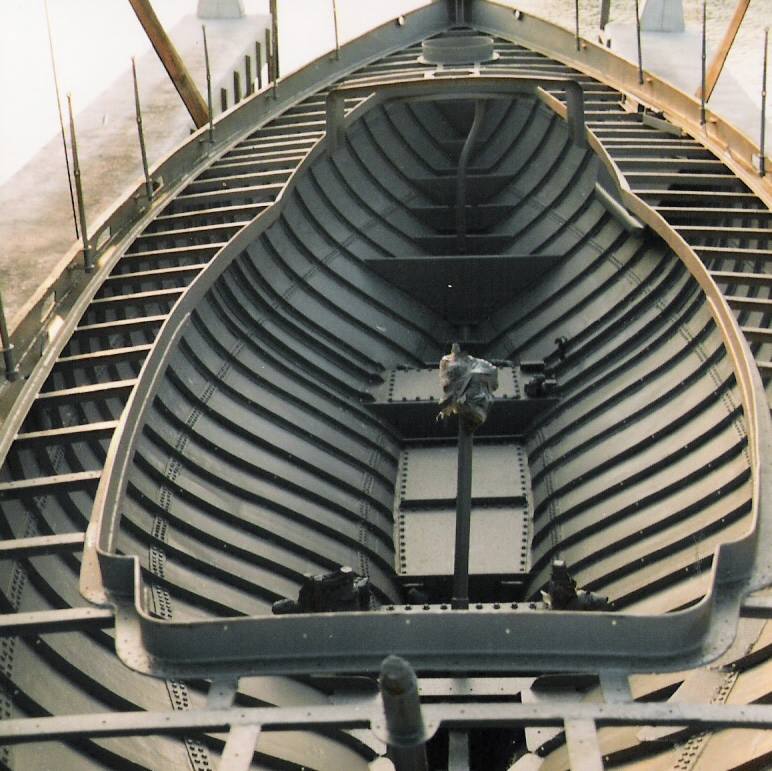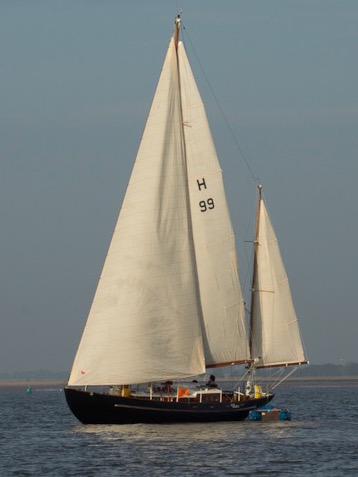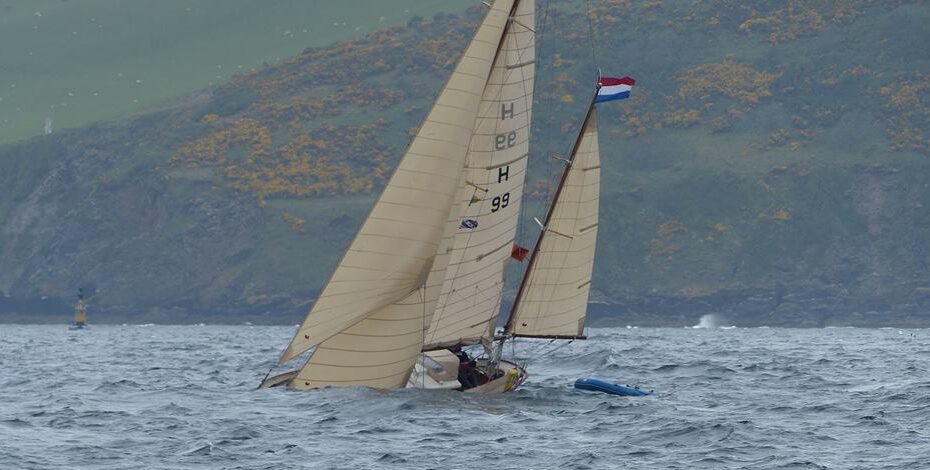Kees Brooshooft, skipper of ‘Vlieter’, undertook the OGA Round Britain Challenge in 2013 and shares with us his longing for a classic boat with a brief resume of how he purchased and renovated ‘Vlieter’ in his home port of Makkum, Netherlands.
As a professional sailor for some years, my boating adventures started with an old wooden lifeboat which I converted into a cruising sailing boat. It was looking lovely but unfortunately she sailed worse than a piano and the hull deteriorated under my fingers. From 1983 I was a part-time skipper on our company sailing boat – a wonderful time because I could use it privately as well, however after a management change this boat was sold. I bought a Seamaster 925 named Banjer. We sailed her for many years but it started to bore me, I was under the impression that renovating and sailing should give me more satisfaction, so I started to look for something classic. I found this during a race between Harlingen and the Isle of Terschelling in the harbor of West Terschelling. There she was; ‘Vlieter’, a yawl, nice hull and in need of attention. I kept cool and we finished our race, but the first thing I did back home was to call the owner. He sent me the details and he told me that the condition of ‘Vlieter ‘was OK, she needed some varnish and the teak deck needed attention, it was recently sandblasted. He also told me that he was already in negotiation with other people and that it should appear in a sailing magazine the next week. I made an appointment and went again to Terschelling with my family the next weekend. During the inspection I did not dare to remove any panels, afraid to find nasty things, I was in love, only wanted to see the beauty and I wanted to buy her. That was July 1993.
After the purchase contract was signed I registered it with the shipping cadastre and arranged a ship mortgage to pay and renovate. When this was settled we sailed her from Terschelling to our homeport of Makkum. The engine and gearbox gave some problems and produced a lot of noise but under sail it was fantastic. In Makkum we put it onshore and we went on holidays with Banjer.



‘Vlieter’ is a yawl with a steel riveted hull, also the frames are riveted to the hull, the deck is of 28mm teak directly laid on the beams, the cabin is teak and the interior is mahogany. She is designed by Henk Tingen from Amsterdam and built in 1946 at the shipyard Kok in Vinkenveen. With her sail number H99 she was for a long time a well-known boat in Holland. Sailing in Holland we still meet people who recognize her from the past. Building ‘Vlieter’ started shortly after World War II, I spoke with the designer Henk Tingen a few times on the phone, among other things he told me that the steel was left by the Germans and of good quality. Unfortunately by the time the renovation of ‘Vlieter’ was finished Henk Tingen had passed away.
After our holidays I could not wait to start to work on ‘Vlieter’. When we took her out of the water, I began to see some disturbing things, there were some doubling plates on the hull and there was a plate welded over the opening of the drop keel in the aft end of the keel. Further inspection revealed that there was a lot of corrosion behind the interior, especially near the galley and heads. The deck was leaking – the water guided by a plastic lining into the bilge. The deck was sagging amidships and it appeared that the deck was supporting the beams instead of the other way around.
I very soon realized that there was only one way to save her and that was by completely stripping the cabin, deck, cockpit and interior first, in order to renovate the hull. And that was how I did it, it took me one and a half years to repair the hull and install new deck beams. I installed a new drop keel and housing and then the hull was sandblasted and primed. It took me another two years to do the deck, cockpit and cabin. The cockpit was completely renewed. The cabin sides were removed and reused with a lot of repairs. I planed the teak deck, after which there was only 20mm left, not enough to have it watertight and therefore I first mounted a layer of plywood and glued the teak deck onto it with bedding compound. I also returned the mast to its original length adding 1.5 metres to it. In documentation I received later on I found out that the main mast was shortened for rating reasons.
Then there where all the fittings; repair, renew shot-blasting and painting. I installed a new engine, gearbox, propeller shaft and stern gland. After that filling, sanding and painting the hull. Just before the 1997 Dutch Classic Regatta, I managed to re-launch her and participate in the event, however without the interior. My wife prepared a temporary bed of pallets she found in the yard, which during daytime could be converted into a couch. The interior took me much longer afterwards and I must admit it is still not completely finished – but enough about the renovation, anybody interested in the full story, I have completely documented it, pictures and text (in Dutch) but I must warn you, it is 40 pages A4 and contains 28,618 words!
Since launching in 1997, we have spent our annual holidays with her, besides our trips in Holland we went several times to the Baltic and also a few times to the East Coast of England. This Round Britain trip is for me is the ‘Cherry on the Pie’ and I hope to safely arrive in Cowes before returning to Holland. With this I would like to thank the OGA organisation and also everybody who we met on our journey and welcomed us in their homeports, it was wonderful.
Thank you, Kees Brooshooft and crew

You must be logged in to post a comment.